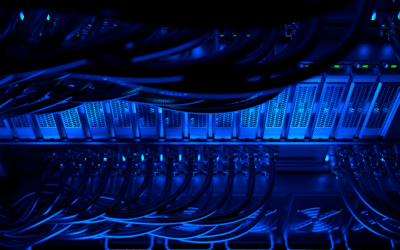It’s now been about one year since COVID-19 lockdowns first started. That was a painful and eye-opening time for a lot of us. We had our lives suddenly turned upside down seemingly out of the blue. Now that we’ve had a year to cope and adjust, however, we should look back on those first few months with a critical eye. Forming unhealthy habits during that time was understandable, but let’s turn over a new leaf now that we may finally be approaching the end of this pandemic.
This is now the second spring we’ve had the coronavirus around. Since the first one sucked so badly, we think there’s a lot we can do to make this season better.
Your Home Office Needs Work
The first item seems like a no-brainer, but it’s something a lot of us have still not gotten around to doing. If you’re someone that takes part in a lot of video calls, you need to have an HD webcam. There are few things more distracting during an important meeting than low-quality video feeds. Fuzzy footage makes you seem unprofessional, especially when you’re talking with people outside of your company. It’s been a year since so many of us started working from home, and if you are still using a low-quality camera
(like the one built into your laptop), it might be worth looking online for an upgrade.
Tech Radar recommends a few different HD webcams available online, including this Logitech C920 HD Pro Webcam for just $80.50 on Amazon. There are plenty more models that are cheaper, but we think that an HD camera for less than $100 is a great investment. You will instantly appear more professional, and with working from home staying popular for the foreseeable future, you’ll get plenty of usage out of one.
While you’re at it, you should also upgrade the rest of your video setup. Here are some other items you can pick up for very little money that will modernize your home office:
- Lume Cube Video Conference Light for $69.95. In addition to a cheap webcam, bad lighting is often the culprit for fuzzy, low-quality video call quality. This light and models like it can clip right onto your device and illuminate your face, improving the overall experience for your meeting participants. A desk mounted light can work just as well. Use whatever fits your space.
- Blue Yeti USB Microphone for $122.37. Most modern webcams over $50 will have a perfectly satisfactory microphone built in. However, if you’re serious about audio quality, you can opt for an external microphone for your desk. Blue Yeti is a leading and respected brand for delivering high quality audio for reasonable money. You won’t be disappointed with this model.
- Apple AirPods Pro for $199.99. These are popular items for a reason. They are a high quality and discrete way to focus, listen to music, take calls, and more. Paired with a good camera, a nice pair of wireless earbuds can revamp your video setup all on its own. Plus, there won’t be any wires dangling in view of your camera.
- Amazon Basics High-Back Executive Office Chair for $163.43. There are few items more underappreciated when you’re working from home than the thing your butt sits on all day. Investing in a comfortable chair will make those long meetings less stressful on your lower-back, glutes, and leg muscles. If you aren’t sure about spending the money, try different models out at a store first before making your purchase.
- TJIN Blue Light Blocking Glasses for $9.99. You don’t have to wear these for your calls or else you’ll have to answer a million questions about them. Still, if you’re at the computer for eight hours per day or more, your eyes experience a large amount of strain, leading to headaches, migraines, and general eye fatigue. For ten dollars, they might be worth a try.
Put an End to Lag
All of this equipment won’t do you much good if your video calls are constantly getting interrupted by lag. If you’ve ever experienced this, you know what we mean: freezing video or audio, calls dropping, people’s voices sounding like they’re traveling through a tunnel, that kind of thing. These mishaps are almost always the fault of a poor internet connection.
That’s why you need to upgrade your home internet network. This can mean changing your internet service provider (ISP) or not. Most ISPs offer different tiers with higher speeds the more you pay. If you’re already paying for the highest tier and it’s not cutting it, give them a call and ask what you can do about it. If your modem or router is old, it could be the bottleneck in your system. And if reaching out to your ISP is a dead-end, research other ISPs that cover your area. Figure out what other kind of speeds are possible in your area.
What is a good internet speed? First of all, your network’s speed is measured in megabits per second (Mbps). When you’re shopping for a new internet plan, you’ll probably see “upload speed” and “download speed” listed. Upload speed is how fast you transmit data from your device to the internet. Download is the reverse: how fast you receive data from the internet. You usually don’t need to pay much attention to upload speeds unless you’re video calling or uploading large files regularly. We’re going to assume since you’re working from home that you are doing this, so we do care about upload speeds.
For download speeds:
- 25 Mbps should be the minimum you shoot for, if you can get. For a smaller home with one to two people using the internet for streaming, FaceTime calling, and web browsing, it should be adequate.
- 50 Mbps to 100 Mbps is around what you’ll need for a home with three to four people using the internet (closer to the 100 if a lot of 4K streaming and gaming is happening in your home).
- 100 Mbps and over is desirable if the price for it is reasonable. Higher speeds are always better, but speeds approaching 1,000 Mbps (1 Gbps) can be overkill for a lot of homes.
Another way to calculate what you need for download speed is by simply adding 10-20 Mbps for every person you’re sharing the internet with.
For upload speeds:
- Most cable internet connections have upload speeds between 5 Mbps and 50 Mbps. Anything in this range is acceptable, but if you plan on using your network for work or school, shoot for the higher end.
- You can ask your ISP what kind of upload speeds you can expect, but generally if you’re upgrading to a 100 Mbps connection (download), then upload speeds should be in a healthy range.
In case you are specifically looking to upgrade your internet to improve the performance of Zoom, you can see their requirements here. You’ll notice they are relatively low (1 Mbps to 4 Mbps), but it’s worth asking yourself if Zoom calls are the only thing you’ll need to do on your network.
With your fancy new internet connection, take advantage of these two other quick hacks to improve the performance you’re getting from the network. Too often, we upgrade our ISP plans but don’t resolve the other problems inside our own homes that are contributing to lag.
Most people wirelessly connect to their internet through a router, and in most cases that is totally adequate. However, some homes have WiFi “dead zones”—places where the internet drops suddenly or slows down dramatically. This can happen because the router is far away from your device or because there are physical obstacles like brick walls blocking signal. You can buy a WiFi extender for your home if this happens to you. Tom’s Guide recommends a mesh WiFi router if your home exceeds 3,000 square feet so that coverage is thorough throughout every room.
If you’re the kind of person that needs everything optimized (or you’re trying to make the most of a slower internet connection), consider a wired connection. You can plug an Ethernet cable directly into your modem, establishing a wired internet connection to your computer (assuming it has an Ethernet port). A wired connection bypasses your router, avoiding and performance issues you might be having with WiFi. It also enables you to access 100% of the upload and download speed you’re paying for. Still, wired connections aren’t for everyone. Around three-quarters of US adults own a desktop or a laptop, but that number has remained stagnant for a decade. And while desktops typically use a wired setup, many laptops, especially slim, lightweight variants like MacBooks, have done away with including Ethernet ports, making a wired connection impossible.
Spring is in the Air
Once you’ve successfully upgraded the technology you’re using to video call with your clients and your team members, it’s time to start thinking about other ways to improve your space. This begins with a deep, spring–cleaning-inspired clean out of your desk area and room. If you’re not one of those people who have had a large increase in spare time or had the luxury or motivation to tidy up, now is a good time to try to come around to it.
A clean working space removes distractions. For some people, cleaning clutter can be cathartic, even if the prospect of actually getting it done seems daunting. Once your space is free from loose papers, dust, and junk, you can focus on the important tasks in front of you since that’s all you’re staring at. A Hardvard University experiment found that an untidy workplace can undermine your persistence in completing tasks and also pose a threat to your sense of personal control.
Still not inspired to clean up? Think about the germs your working space might be carrying right now. Did you know that a typical office keyboard carries up to 7,500 bacteria at any given time? Even though you might not be sharing an office with other people, you’re probably still living with others. When you’re working from home, you’re also more prone to taking quick breaks to the store. Once there, you can touch dirty surfaces. Forget to wash your hands or use sanitizer before sitting back down to work, and wham! Your space is contaminated.
RELATED: How to Disinfect Your Tech
Now that your spring cleaning is finished, you can wipe the cobwebs from your head too. What with the cold weather and quarantine, you’ve probably been holed up inside your home for extended periods of time. The weather is getting nicer, so it’s time to get outside.
Take regular breaks during your workday, focusing on getting some fresh air when possible. In our opinion, it’s not enough to just get some fresh air while you’re out shopping. Multi-tasking is great, but when was the last time you went for a walk just for the sake of taking a walk? For the sake of stretching your legs, clearing your mind, and enjoying the outdoors? Exactly.
So go on a walk and try to decompress for a bit, even if it’s just around the block. We won’t tell you to leave your phone behind, but don’t spend your walk scrolling on Facebook or Twitter. When you return to your workspace, you might just find yourself revitalized.
Organization and Concentration
While you don’t have to leave your phone behind, you really ought to leave work behind once you’re off the clock for the day. Learn how to separate work and play and be strict with your own schedule. It’s the same idea as unplugging for a quick five-minute walk; you can’t continue thinking about work all day long or else you’ll drive yourself crazy—and be less productive. The findings from 2014 study by Stanford University found some shocking results.
“Employee output falls sharply after a 50-hour work-week, and falls off a cliff after 55 hours—so much so that someone who puts in 70 hours produces nothing more with those extra 15 hours.”
In 2015, a Pew Research Center survey found that 35% of U.S. adults say that the Internet, email, and cellphones have increased the amount of hours they worked…and that was half a decade ago! The number has surely increased over the years as technology becomes more and more omnipresent in our work and personal lives. So when it’s 5:00 pm and you’re supposed to be done with work…be done with it! You work to live; you don’t live to work. Go and enjoy that life a little.
RELATED: Learn to Separate Work and Play While Working from Home
Having learned to separate work and play and unplug when the workday is done, you can continue to make that day more efficient and less wasteful. Here’s a great life hack for doing just that: eliminate your half-work. You’re likely doing plenty of it without even noticing. These are two of James Clear’s examples that we like the best. Does either of these habits sound familiar?
- You begin to write a report but keep picking up your phone to scroll through Facebook.
- Your mind wanders and you end up checking your emails while on the phone with somebody.
If you’re doing either of these things, you’re engaging in half-work. Congratulations! That means you’ve found a way to improve your productivity throughout the day. You need to fully focus and engage with the task at hand or else you’ll end up half-working.
Here’s our recommendation. Take advantage of our other hacks like taking regular breaks, going for walks, and separating work and play first. If you do too much half-work, your mind is trained to not be fully engaged with work. Set timers if it helps you divide your day better. Sit down and say, “Okay, I’ve got 45 minutes until my next 15-minute break. I’m not going to check Facebook before this timer goes off. I won’t open any unimportant emails or any non-critical Chrome tabs, either.” Say this to yourself throughout the day. Your frequent, scheduled breaks will have a calming effect, making work feel less like an insufferable grind towards 5:00.
What’s the key takeaway here? Don’t trick your mind into thinking it’s staying busy when you’re really just doing half-work. A good boss would rather have you put in a very productive six hours rather than a half-productive eight or more. And you should like that too! It frees up time to start making positive changes in the rest of your life too.
Working from Home Never Looked So Good
We’ve laid out a list of work from home hacks you can start implementing today (even if you have to wait a few days for shipping). Action is such a powerful thing, and sometimes all it takes is one small change you make now that snowballs into something greater. You can pick and choose which of these hacks you like best; you don’t have to do them all—or even any of them. But hopefully it has given you some ideas for making your own work from home experience better. This pandemic has been rough, but with a little grit and perseverance, we can come out the other side stronger than we went into it.



